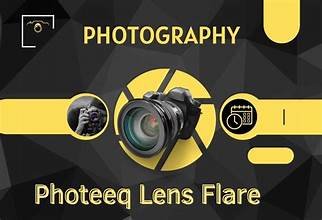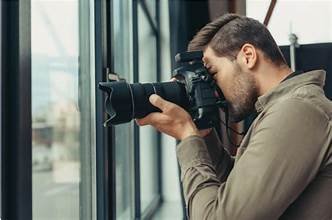Introduction to Photeeq Lens Flare
Lens flare is a captivating optical phenomenon that occurs when light scatters or reflects inside a camera lens, creating stunning visual artifacts. Among the various tools available to photographers and digital artists, Photeeq Lens Flare stands out as a powerful solution for adding realistic and artistic lens flares to images. Whether you’re enhancing a portrait, creating a cinematic effect, or adding a touch of magic to your photos, understanding how to use Photeeq Lens Flare effectively can elevate your work.
In this comprehensive guide, we’ll explore everything you need to know about Photeeq Lens Flare, including its features, benefits, and practical applications. We’ll also provide step-by-step instructions on how to achieve the best results with this tool.
Table of Contents
What Is Lens Flare?
Lens flare occurs when non-image-forming light enters a lens and interacts with its internal elements, resulting in scattered light patterns. These can appear as circles, rings, streaks, or haze, depending on the light source and lens construction. While some photographers avoid lens flare as an unwanted artifact, others embrace it for its artistic and dramatic impact.
Types of Lens Flare
- Veiling Flare – A haze-like effect that reduces contrast across the image.
- Ghosting Flare – Circular or polygonal shapes caused by reflections between lens elements.
- Anamorphic Streaks – Horizontal streaks often seen in cinematic footage.
- Sensor Flare – Occurs when light bounces off the camera sensor, creating unusual patterns.
Understanding these types helps in replicating or enhancing them using Photeeq Lens Flare.
Why Use Photeeq Lens Flare?
Photeeq Lens Flare is a specialized tool designed to simulate realistic lens flare effects in post-processing. Here’s why it’s a favorite among photographers and designers:
1. Realistic Light Simulation
Unlike generic flare overlays, Photeeq Lens Flare mimics the physics of light, ensuring natural-looking results.
2. Customizable Effects
Users can adjust flare intensity, color, position, and shape to match their creative vision.
3. Time-Saving Workflow
Instead of manually painting flares, Photeeq Lens Flare automates the process with precision.
4. Compatibility
It integrates seamlessly with popular editing software like Adobe Photoshop, Lightroom, and After Effects.
5. Artistic Versatility
From subtle highlights to dramatic cinematic effects, Photeeq Lens Flare enhances various photography genres, including portraits, landscapes, and product shots.
How to Create Lens Flare Using Photeeq Lens Flare

Step 1: Install and Open Photeeq Lens Flare
- Download and install the plugin compatible with your editing software.
- Open your image in Photoshop (or your preferred editor) and load the Photeeq Lens Flare tool.
Step 2: Adjust Light Source Position
- Identify where the light should originate (e.g., the sun, a lamp, or a reflection).
- Use the positioning tool to place the flare realistically.
Step 3: Customize Flare Settings
- Intensity: Control how bright or subtle the flare appears.
- Color Temperature: Match the flare’s hue to the light source (warm for sunlight, cool for artificial light).
- Shape & Type: Choose between circular, hexagonal, or anamorphic flares.
Step 4: Blend with the Image
- Adjust blending modes (e.g., Screen or Overlay) for seamless integration.
- Use masking to refine where the flare appears.
Step 5: Fine-Tune and Export
- Review the effect and make final tweaks.
- Save your image in the desired format.
Creative Applications of Photeeq Lens Flare
1. Cinematic Photography
Adding lens flare enhances the dramatic feel of cinematic shots, making them look like stills from a movie.
2. Portrait Enhancement
A soft flare can add a dreamy, ethereal quality to portraits, especially in backlit scenarios.
3. Product Photography
Strategic flares can highlight luxury items like jewelry or watches, adding a glamorous touch.
4. Landscape & Travel Photography
Sun flares in landscapes create a sense of warmth and depth, making scenes more immersive.
5. Digital Art & Compositing
Artists use Photeeq Lens Flare to blend CGI elements with real photos, ensuring realistic lighting.
Tips for Achieving the Best Results with Photeeq Lens Flare
1. Study Real Lens Flares
Observe how natural flares behave in different lighting conditions to replicate them accurately.
2. Avoid Overuse
Too much flare can distract from the subject—subtlety often works best.
3. Match Light Sources
Ensure the flare’s direction and color match existing light in the scene.
4. Experiment with Blending Modes
Different modes (Screen, Overlay, Soft Light) produce varying effects—test them to find the best fit.
5. Combine with Other Effects
Pair flares with bokeh, light leaks, or color grading for a more dynamic result.
Common Mistakes to Avoid When Using Photeeq Lens Flare

1. Unrealistic Placement
Flares should align with natural light sources—random placement looks artificial.
2. Excessive Brightness
Overly intense flares can wash out details—balance is key.
3. Ignoring Image Composition
Flares should enhance, not overpower, the main subject.
4. Using Low-Quality Overlays
Pixelated or generic flares reduce image quality—Photeeq Lens Flare provides high-resolution options.
5. Skipping Masking & Refinement
Precision masking ensures flares interact naturally with objects in the scene.
Photeeq Lens Flare vs. Traditional Lens Flare Techniques
| Feature | Photeeq Lens Flare | Traditional Methods |
|---|---|---|
| Realism | High (physics-based) | Low (manual editing) |
| Customization | Full control over settings | Limited adjustments |
| Speed | Quick & automated | Time-consuming |
| Compatibility | Works with major editors | Requires manual workarounds |
| Consistency | Repeatable effects | Varies per attempt |
Frequently Asked Questions (FAQs) About Photeeq Lens Flare
1. Is Photeeq Lens Flare compatible with all photo editors?
Yes, it works with Photoshop, Lightroom, After Effects, and other major editing tools.
2. Can I use Photeeq Lens Flare for video editing?
Absolutely! It’s great for adding cinematic flares to footage in After Effects or Premiere Pro.
3. Does Photeeq Lens Flare work on mobile devices?
Currently, it’s designed for desktop editing software, but some mobile alternatives offer similar effects.
4. How do I make lens flares look natural?
Match the flare’s position, color, and intensity to the existing light sources in your image.
5. Can I create custom lens flare presets?
Yes, Photeeq Lens Flare allows you to save and reuse your favorite settings.
Also read Luuxly.com Style: A Comprehensive Guide to Effortless Elegance
Conclusion: Mastering Lens Flare with Photeeq
Photeeq Lens Flare is an indispensable tool for photographers and digital artists looking to add professional-grade light effects to their work. By understanding its features, experimenting with settings, and applying best practices, you can create stunning, realistic flares that enhance your images without looking artificial.

